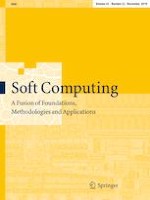05-01-2019 | Methodologies and Application
EEFR-R: extracting effective fuzzy rules for regression problems, through the cooperation of association rule mining concepts and evolutionary algorithms
Published in: Soft Computing | Issue 22/2019
Log inActivate our intelligent search to find suitable subject content or patents.
Select sections of text to find matching patents with Artificial Intelligence. powered by
Select sections of text to find additional relevant content using AI-assisted search. powered by
